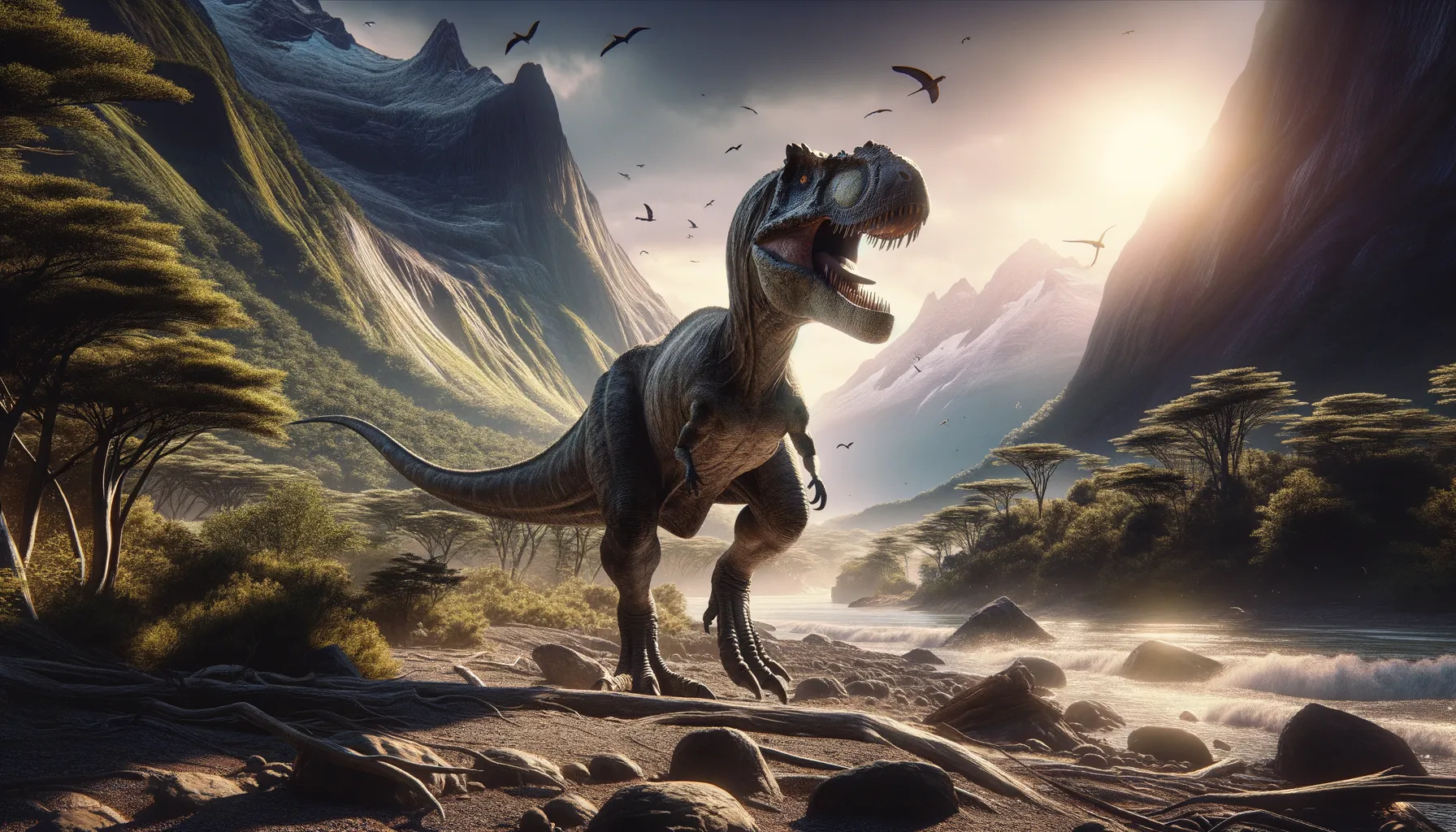
Ekrixinatosaurus
A powerful predator from the past!
Period
Cretaceous
Length
Around 30 feet long.
Height
Roughly 15 feet tall.
Weight
Approximately 3 tons.
Ekrixinatosaurus was a large carnivorous dinosaur that roamed South America in the Late Cretaceous period. Known for its robust build and strong limbs, this predator could hunt efficiently, likely preying on large herbivores. Its name, meaning 'explosion-born lizard,' reflects the forceful excavation methods used during its discovery. While not the fastest dinosaur, its sheer power made it a formidable presence in its ecosystem.
Diet
Ekrixinatosaurus was a carnivore, primarily preying on large herbivorous dinosaurs. It likely had a varied diet, taking advantage of any opportunity to hunt or scavenge for meat. Its sharp teeth and strong jaws were well-suited for tearing through flesh.
Hunting
This dinosaur used its powerful build and sharp claws to catch prey, likely employing ambush tactics to surprise its targets. With a streamlined body, it could chase down slower or injured herbivores. Group hunting may have increased its success rate.
Environmental challenges
During the Cretaceous period, Ekrixinatosaurus faced fluctuating climates, including periods of aridity and changing vegetation patterns. Competition for food resources with other large predators was a constant challenge. Natural disasters, such as volcanic eruptions, could also significantly impact its habitat.
Speed
Moderately fast, akin to similar theropods.
Lifespan
Estimated to live around 15-20 years.
First discovery
Discovered in Argentina in 1995.
Fun Facts
- Ekrixinatosaurus was a large, meat-eating dinosaur that lived in what is now South America.
- Its name means 'explosion-born lizard,' because its fossils were discovered during blasting for a pipeline in Argentina.
- Ekrixinatosaurus was part of a group of dinosaurs known as abelisaurids, which were known for their short, stocky legs and strong jaws.
- This dinosaur lived during the Late Cretaceous period, about 97 million years ago.
- Though it was a predator, Ekrixinatosaurus likely faced competition from other large carnivores in its ecosystem.
- Its fossils provide valuable insights into the diversity of South American dinosaurs during the Late Cretaceous.
- Being discovered in unusual circumstances highlights how new dinosaur discoveries can sometimes come from unexpected places.
Growth and Development
Ekrixinatosaurus started life as a small hatchling, rapidly growing during its early years. It is believed that it reached its full size within a decade. Juveniles may have undergone gradual changes in their diet and hunting techniques as they matured. Annual growth rings in its bones suggest seasonal growth patterns, possibly linked to environmental factors.
Habitat
Ekrixinatosaurus lived in what is now South America, in a landscape that included forests, rivers, and open plains. This varied environment provided ample food sources and hunting grounds. Seasonal changes in the region would have required adaptability, particularly during periods of resource scarcity.
Interaction with other species
Ekrixinatosaurus likely interacted with a variety of dinosaur species, both as a predator and competitor. Its presence would have influenced the behavior and evolution of other species within its ecological niche. Coexisting herbivores developed defensive adaptations, while smaller carnivores may have scavenged its leftovers.
Natural lifespan
Ekrixinatosaurus's natural lifespan was likely limited by competition, disease, and predation threats from juvenile to adult stages.
Reproduction
Reproduction likely involved laying clutches of eggs in nests, possibly in communal nesting grounds. Parental involvement after hatching is uncertain, although some theropods are thought to have provided some care. Hatchlings would have relied on immediate growth spurts to escape predation threats.
Social behaviour
While largely solitary, Ekrixinatosaurus might have engaged in social behaviors during certain activities, such as mating or rare instances of group hunting. Territories were probably established and defended aggressively, especially by dominant adults. Vocalizations and displays could have been used for communication.
Fossil locations
The primary fossil remains of Ekrixinatosaurus have been unearthed in the Neuquén Province of Argentina. These discoveries have provided key insights into its size, anatomy, and ecological role. Continued fossil exploration in the region may uncover additional specimens or related species.
